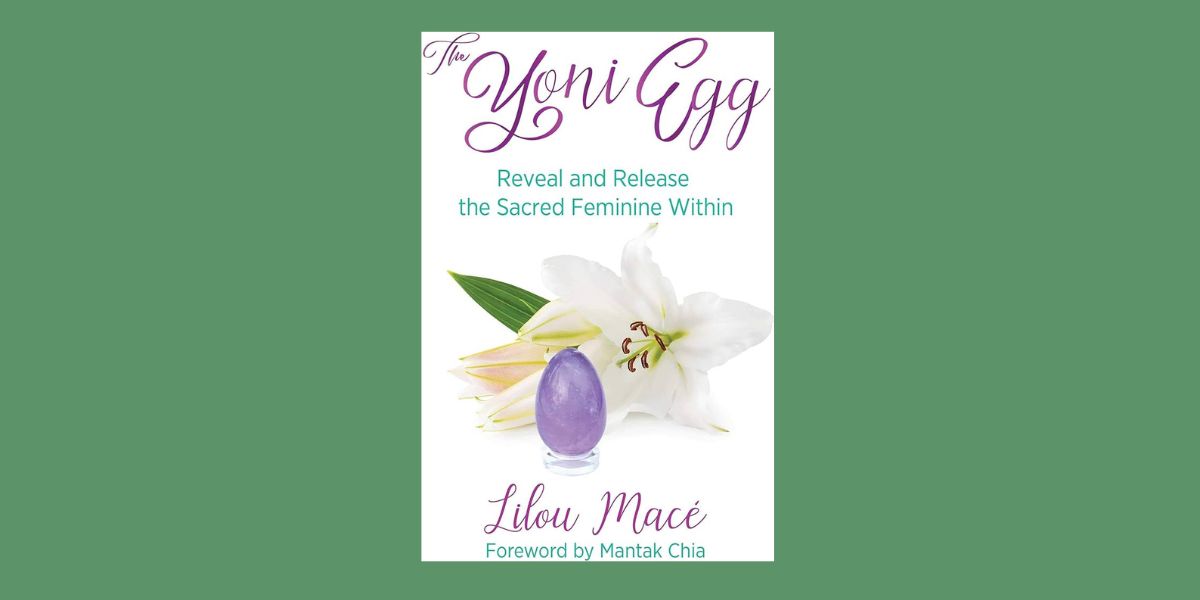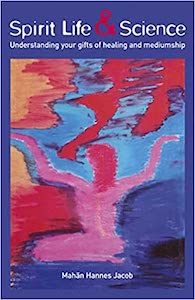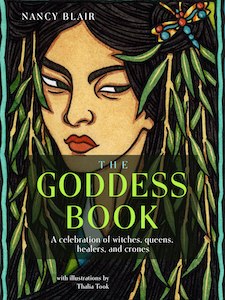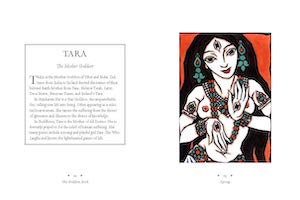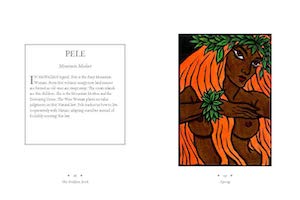
The Yoni Egg: Reveal and Release the Sacred Feminine Within, by Lilou Macé
Destiny Books, 1620558653, 192 pages, September 2019
I’ll admit that I was a bit dubious about yoni eggs at first. But the more I thought about, the more these feelings had to do with a resistance towards bringing my awareness to this part of my body, as it felt a bit shameful and naughty. The Yoni Egg: Real and Release the Sacred Feminine Within by Lila Macé opened me to see the way yoni eggs can be physically, emotionally, and spiritually healing. After reading this book, I’ve found the courage and confidence to begin my own yoni egg practice.
Lilou Macé has dedicated her life to promote the art of creating a healthy and fulfilling life. She has an extremely popular YouTube channel where she shares her wisdom with others. She also organizes events worldwide, naturally creating conscious communities globally.
This book begins with Macé teaching readers about the yoni, providing colorful graphics that give perspective about the area of the female body. She then moves into the yoni eggs, from their origin to their symbolism. Before diving in further, there’s an exercise provided to test how toned you perineum is as a baseline for moving forward with the exercises.
There’s a whole chapter covering the range of benefits working with a yoni egg has for a woman. Some of these include building self-confidence, liberating past memories, preventing your internal organs from dropping, easing PMS symptoms, decreasing incontinency, intensifying orgasm, and rebalancing the libido. Through this section, there’s tons of quotes from people who have first-hand experienced the benefits and share their perspective.
The second part of this book focuses on how to find the perfect yoni egg for your situation. Macé covers all the lifestyles/times in life one might be in the position to use the egg, from being over stress to preparing for childbirth to having undergone an hysterectomy. The key is to understand your intention for using the yoni egg as you make your selection, as different types will have certain benefits. She also helps readers to consider the correct size by considering factors like your current tone, activity level, age, previous surgeries, yoni egg experience, and more.
My favorite part was about the different effects of yoni eggs based on the type of stone. I learned how Nephrite Jade, the stone of harmony, balances masculine and feminine energy while promoting inner-knowledge, while Smoky Quartz, stone of rootedness and stability, provides grounding and balancing between the material and spiritual world. This section is immensely helpful for selecting the type of stone that is best sited for what you wish to accomplish with your yoni egg. Macé also includes guidance on how to spot a fake egg and take care of the egg based on the type of stone it is.
The next half of the book is about actually using the yoni egg. Macé beings with teaching readers how to prepare, insert/remove the yoni egg, and how keep it in you during your practice. All of these things take time, and the main focus is to move at your own pace and not rush through. Lubrication is important, and readers are encouraged to take breaks as needed. There are plenty of colorful pictures for reference to help readers know exactly what to do.
As one’s yoni egg practice develops, Macé asserts readers will be able to better communicate with their yoni egg through programming it with intentions, as well as listening to the wisdom of their yoni more. This practice is a method of attuning oneself to healing and listening to the intuition of the divine feminine within. Macé offers rituals one can do with their yoni egg, such as a writing a special letter or taking a sacred bath, to further deepen their bond with their bodies while using their yoni eggs.
Overall, The Yoni Egg is a wonderful resource for those interested in this healing modality. From enhancing your pelvic floor and vaginal muscles to clearing out lingering emotions and reviving creativity, the benefits of this practice as limitless. Macé is a very gentle guide, who ensures readers are equip with all the knowledge needed to be their own practice. I recommend reading this book before even purchasing your stone, as there’s pertinent information about how to make the best selection. Once you’ve picked out the perfect yoni egg, the rest of the book will be a wonderful initiation into the power of the yoni and sacred feminine within.
Alanna Kali is an astrologer, numerologist, and pioneer spirit that loves to explore life through the lens of depth psychology. She has a passion for studying the humanities and social trends. Her academic work is centered upon reuniting body, mind, and spirit through eco-psychology. She loves reading, spending time in nature, and travel.
